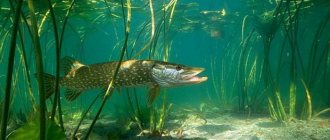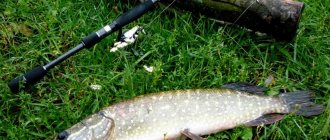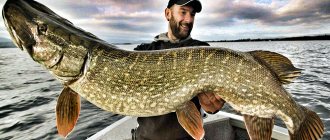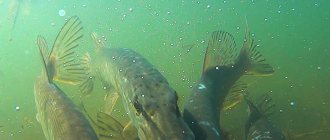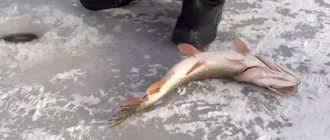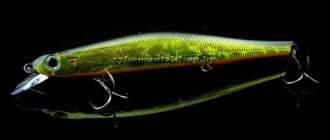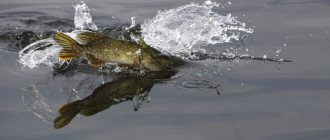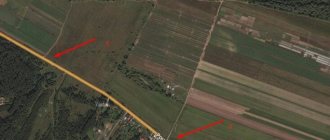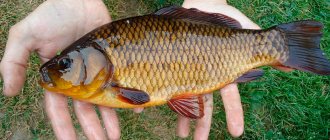The ichthyofauna of our country’s water bodies is rich and diverse, but pike occupies a special place in it. Catching a cunning predator is an honor for every angler, so catching large pike with a spinning rod is popular not only among amateurs, but also among sports fishermen.
There are other tackles used for catching toothy predators, but it is the delicate and fragile spinning rod that gives great pleasure when fishing for this fish.
If fishing is carried out from a boat, then the new boats on Fish360.ru should interest an experienced fisherman, since a cozy place to spend time fishing is very important. Also, do not forget about safety and practicality.
The popularity of pike fishing is due to several factors:
- catching a predator is dynamic and requires constant attention from the angler;
- an adult pike reaches a length of one and a half meters and 35 kg in weight, that is, qualifying trophies are caught on the hook;
- sharp teeth easily tear gear when fishing, so preparing equipment for pike fishing is a kind of fisherman’s test of professional suitability;
- wide habitat, because this predator is found in both the north and south of the country;
- pike bite all year round (sometimes better, sometimes worse) and even from under the ice it is quite possible to catch a trophy specimen;
- Pike has delicious meat and there are many recipes for preparing delicious dishes from this fish.
We have many paid reservoirs where pike are bred, because there will definitely be those who want to catch the toothy predator.
But still, true pike fishing is on rivers, and in these conditions fishing is carried out both from a boat and from the shore. Each option has its advantages and disadvantages, but in any case, pike fishing is exploratory, and the angler has to travel long distances in search of fish. Summer and winter fishing for pike have their own characteristics, although using a spinning rod with artificial bait is the right decision.
Why coastal?
Pike, as you know, live and hunt near the shore in summer. In a passive state, it takes a position in snags or rolls down to the lower points of the edge. It has been noticed that a medium-sized pike (up to two kilograms in weight on large and medium-sized rivers) usually stays near the shore in thickets of bushes and snags. Large pike make only periodic forays into the coastal zone to feed, and when satisfied, they go to rest at the lower points of deep dumps. Finding such points in unfamiliar places and seducing a satiated “monster” is problematic. Therefore, it remains to focus on coastal pike.
Tackle
Expensive tackle is not necessary—extra-long casts are not required, and it’s hard not to notice a pike bite. Villagers can also catch pike quite successfully with cheap Chinese spinning rods and reels, monofilament and the most primitive baits. Despite the simplicity of the required gear, I recommend paying attention to the structure of the spinning rod: it should not be too “fast” in order to successfully dampen pike jerks when fishing, especially short ones. The pulling force of the reel should be increased, since the pike is a real fighter when fishing.
Bait
The main types of baits are jigs: foam fish, silicone twisters and vibrotails. I don’t think that wobblers would be less effective in this case, but a decent wobbler is not cheap, and it’s not always possible to raise a hand with a spinning rod to launch such a bait into the thick of the branches of fallen bushes, the presence of which increases the chances of catching coastal pike. We abandoned “hardware” such as turntables and vibrators a long time ago, for the reason that fishing is worse with them. If the pike is active, then until the recent past the choice of bait type was not considered a particularly important point. Many conservative fishermen to this day consider the best pike bait to be the spoon. As a rule, these are those fishermen who somehow in the distant past were lucky several times on a pike lake when fishing with a metal spinning rod and a Neva reel. But, I repeat, if you take the statistics of a large number of fishing trips on the Oka, the advantage of the jig is obvious. Well, the spinner is a bait for small rivers, where mostly small pikes live.
Since fishing takes place near the shore and, as a rule, at shallow depths, the color of the bait also becomes important. The more similar the bait is visually and in movement to an impudent fry, the faster the predator will lose its balance and grab the troublemaker. Quite often, only a real fish on a rig can arouse the interest of a predator on a hot day. As for classic jig baits, even due to my commitment to fishing with foam fish, twisters and vibrotails are still better suited for catching pike. An active bait will more excite the predator to grab, which has highly developed lateral line sensors. And practice confirms this.
Fishing for pike in summer using a spinning rod
After the water in the reservoirs warms up, the behavior of the pike changes. The predator goes to its usual hiding places and guards its prey in places with aquatic vegetation near the shore and in shallow water. This is due to the behavior of the fry, the object of the hunt, which hides in the algae, hoping for camouflage.
A seasoned pike is capable of remaining motionless for a long time, which misleads small fish. When the fry loses caution, a sharp jerk follows, and it ends up in the mouth, having no chance of salvation.
The best time to catch pike in the summer is morning and evening, when the sun begins to set. Pike rarely bite at night, but using bright luminous baits, anglers provoke it to bite and achieve success.
Test specimens prefer to stay at depth, near holes and undercuts, in places where white fish pass. Catching a trophy pike in the summer is not at all easy, especially for inexperienced anglers.
During rain or inclement weather, when the water is saturated with oxygen, the predator becomes more active, and the chances of being hooked increase.
Lures for summer pike fishing:
- wobbler-minnow;
- rotating spoon;
- vibrator;
- rattlin;
- spinnerbait;
- popper;
- silicone twister.
The choice of bait depends on the fishing conditions and the spinning rod used by the fisherman, and an effective type of fishing is twitching.
The fishing kit consists of:
- fast action spinning rod with a length of 210-240mm;
- spinning reel with spool 2500-3000;
- braided fishing line with a diameter of 0.16;
- steel leash.
In summer, the water in rivers and lakes is not as clean as in spring, so a transparent fluorocarbon leash is replaced with a metal one. The metal leash is reliable and durable, and when biting a strong pike, it allows the angler to feel confident.
Signs of pike places
When fishing in the morning or evening at “pike-perch” points remote from the shore, we wittingly or involuntarily notice coastal places where the predator’s splashes on the water surface most often occur. It is not difficult to distinguish pike splashes from others. Except that sometimes an asp can imitate something similar. When the zander bite ends, such places need to be given priority attention. Also effective is systematic movement along the shore with casts under bushes hanging over a steep bank or fallen into the water and in the immediate vicinity of them. The edges, for the most part, run parallel to the shore, so casting at an acute angle to the shore with the current can be considered the most promising. If you feel or know that pike is present here, then you need to choose the most convenient location for casting at a considerable distance from this place so as not to frighten off the predator.
How to get up?
The spinner, ideally, should be positioned on the shore slightly above the fishing spot. You should pay attention to small shoreline ledges that allow you to cast at a “zero angle.” It is desirable that the shore be convenient for fishing. This is quite an important point and cannot be ignored. I remember a couple of years ago, having chosen not the best position for casting and standing almost on one leg, I sent the bait directly to the coastal dump, access to which was blocked by abundant bushes and tall grass. No sooner had the weight touched the bottom than a powerful bite almost tore the spinning rod out of my hands. The pike landed at 5-6 kg. Having dragged it for about 30 meters, I thought about how to pull it out? There are bushes all around, a snag in the center, and I’m standing on one leg. The pike, taking advantage of my confusion, came to the “candle”, and all my “problems” were solved by themselves. Fish in the river, me with a loose tackle in my hand.
We begin to look... under our feet
In summer, pike often, forgetting about caution, hunt so close to the shore that sometimes with their splashes they almost splash the fisherman from head to toe. Surely every spinning player has similar episodes in his memory. Therefore, when approaching the fishing spot, especially if this place is a coastal cliff, the first couple of casts should be made in the immediate vicinity of the shore, or simply lower the bait vertically from the cliff and play with it a little, simulating wiring. Having quietly descended to the chosen point, we make the first cast a few meters, checking the place for the presence of pike near the shore. With the second cast, we check the other coastal direction, etc. In my practice, there were many cases when a pike, while fishing, broke off the hook of the bait when trying to throw it onto a steep bank. A vertical lowering of the bait with a slight rocking of the spinning rod several times led to a repeated bite from the escaped predator.
…We continue - under the bushes
Having checked the nearest lines with control casts, we begin to fish the most promising places. First of all, these are thickets of bushes, fallen trees and depth changes. When fishing for a bush or a flooded tree, it is advisable to make the first cast to the point of the fallen bush or tree farthest from the shore. Then the casts follow closer to the shore with a constant decrease in the angle between the fishing line and the shoreline, up to a zero angle. And the closer the bait falls to the bush, the more likely it is that the pike will be tempted by it. Using sports terminology, we make casts on the verge of a foul. When casting “into the bushes,” it’s not uncommon to get caught on the release, even before the bait touches the bottom for the first time.
Perhaps the only contraindication to such casting is a strong head or side wind. When casting, the fishing line bends like a horseshoe, and the likelihood that it will hang on bushes or trees greatly increases. Several similar episodes that happened to me resulted in the loss of expensive braided cords. This should always be kept in mind.
Having fanned the flooded bush in all directions, you can turn 180 degrees and cast along the shore against the current. Usually, the current under the shore is much weaker, and with such casts a full-fledged step-by-step retrieve is obtained. If there is sufficient depth, it is more advisable to place the bait in a “step”, and in shallow places and steep near edges you can simply slowly drag it along the bottom, sometimes stopping it. With such dragging, the bait will leave behind a trail of rising ground, which can tempt a nearby predator.
When fishing a new place, you will automatically get an idea of the bottom topography. Of course, there is a chance that for such reconnaissance you will have to sacrifice several decoys, so it is better to treat this as a planned loss. The reward will be new coastal “points”, and your trophies on them will not necessarily be only pikes.
Fishing places
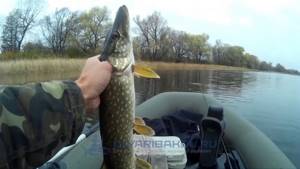
A toothy predator is always looking for some natural shelter in order to lie in wait for a potential victim and suddenly attack it, rather than chasing fish across the expanses of water. Let's look at the features of fishing on various rivers depending on their size.
Small rivers
On small rivers, finding a fishing spot is quite simple. , the bottom topography and various potential hiding places for a predator, such as snags or a fallen tree , are easily visible . It would also be a good idea to pay attention to riffles or sharp drops in depth after them - this is a standard place for all predators , and on small rivers there should be many such places.
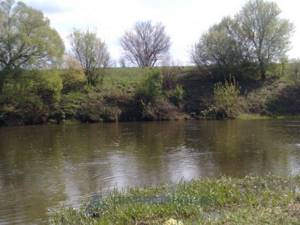
thickets of reeds or reeds on the shore, especially if the water surface is covered with water lilies or pondweed . In this case, you should again pay attention to the speed of the current , since the pike avoids it and stays in quiet places . Therefore, an excellent place would be a wide section of the river before a turn in the channel or behind a sharp protrusion of the bank, in front of which the flow slows down significantly .
Dams or backwaters , both natural and artificial, deserve special attention This may be almost the only place on a small river where there is significant depth and at the same time a weak current. large individuals gather , since it is difficult for them to hide . Moreover, you can try to fish before and after the . In this case, after passing the dam, many small fish become stunned and become easy prey for predators, which in turn attracts pike .
Middle rivers
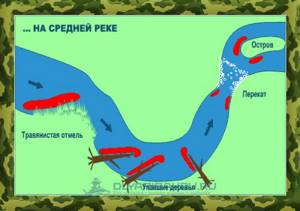
On medium-sized rivers, preference should be given to areas with a sharp change in bottom relief , for example, a hole after a rapid.
Places with weak currents and oxbow lakes are also relevant. Here the pike can rest and hunt at the same time, if there is still a hole near the shallow water. Although small pike hunt in shallow water , large individuals prefer deep areas .
On medium rivers, another standard pike place is a narrowing section of the river . This is possible in the presence of islands . In this case, the pike stay near the shore of one of the branches and wait for their prey in the quietest place downstream of the island.
Big rivers
The most difficult to find pike are the large rivers . There is a significant dependence on the bottom topography , and it is simply impossible to determine this by eye. In addition, fishing from the shore is no longer practical and you have to use a boat . an echo sounder with you and look for places with a sharp drop in depth or with underwater obstacles in the form of large stones and boulders.
Other possible habitats for the predator may be riffles and areas with rip currents . On the other hand, in cool or cloudy weather, you can fish in shallow water overgrown with reeds . This is the food base for “peaceful fish” , and pike always stays close to it .
And of course, we shouldn’t forget about the various artificial dams that exist on any navigable river. Here there is great depth with low current speed - a favorite place for pike.
Visual search
If there are no notable places along a long stretch of reservoir where pike could be found, you can walk along the steep shore and simply observe the coastal zone. One hot July day, I was walking along a cliff and saw a one and a half kilogram pike swimming near the surface. The gear had already been collected, and it was simply too lazy to unwind it again. I began to observe and saw that the pike made a sharp acceleration, and the prey was clearly visible in its mouth. The predator, slowly, went into the depths. This episode interested me, I decided to linger and continued my observations. After some time, another pike, already larger in size and weight than the first, repeated the maneuver of its predecessor. Here my nerves gave out: I unwound the gear again, quietly went down to the water a little higher upstream and cast along the shore. Already on the second retrieve there was a powerful bite, and the toothy one ended up on the shore. A few more casts led to the capture of a second pike. Since then, visual search has become one of my main methods of finding new places.
Features of fishing for pike from the shore
For a successful fishing process from the shores of reservoirs, you should carefully know the basic nuances of the behavior of these representatives of the predatory pike family. You should also familiarize yourself with the most favorite types of bait for pike, and study the possible places where these predators appear.
When fishing from the banks, the following parameters should be considered:
- you need to know the approximate depth in the fishing areas,
- know how strong the current is in a given place of the reservoir,
- study the features of the coastal area and bottom surface,
- the presence of various snags and thickets.
In this case, the largest area of the reservoir should be covered, since representatives of the pike family can hunt anywhere. In cases of fishing in river spaces, the search for this fish is greatly facilitated. In lake-type reservoirs, pike most like to be closer to the bottom; its exact location is much more difficult to find.
Since fishing from the shore is carried out mainly with spinning rods or casts, it is practically impossible to fish the entire space where a given predator can be located.
There is pike, but it doesn’t eat!
Often, pike in the coastal zone make their presence known by splashes and breakers in pursuit of fry. Here you no longer have to guess whether there is a predator in this area or not. As a rule, a few casts into the splash zone and the pike ends up on the shore. There are times when pike and fry are constantly chasing near the shore, but do not want to take the bait. It was a rainy June of 2000. Having caught pike perch in one of the fishing spots, I decided that returning home without a pike was somehow out of the question. I chose a familiar bay with bushes growing along the banks. I stood at a familiar point and began casting along the coastline. Literally 10 meters from me, a pike kept chasing the fry, sometimes jumping high out of the water. What did I do to catch her? I tried all kinds of wiring and baits, but to no avail. For about twenty minutes I tried to “seduce” the intractable pike and in the end I decided to “give up” on this matter. He walked a few meters forward and made an accurate throw directly under the opposite shore of the bay. Before the bait had time to touch the bottom, a bite followed, and the long-awaited pike was caught. And the previous one - the one he was hunting for - continued to chase the coastal fry.
Fishing for pike in the spring with a spinning rod
Early spring, when nature wakes up and sparkles with new colors, is the most favorable time for pike fishing. This is the period when most aquatic inhabitants spawn and lose caution, and a hungry predator takes advantage of their defenselessness.
Pike is one of the first to spawn, and immediately after the ice melts on the rivers. It turns out that by the time the rest of the aquatic world spawns, the pike fry grows up and provides food on its own.
Predator parking areas on rivers in spring:
- channels, places of branches of the main channel;
- channel dumps;
- snags, trees and bushes flooded with water;
- areas near the coastline with reeds and deep waters.
Weakened after the winter cold, the pike is not too active, but carefully watches what is happening and, when it sees an interesting bait, will not refuse to attack. The bait movements are not sharp, at depths with pauses of 5-10 seconds.
Pike spawn for about two weeks, and during this time it is difficult to catch it because the fish does not feed and gets hooked by accident. In order not to disturb the natural balance and preserve the population, fishermen should not go to reservoirs during the spawning period. But 7-10 days after the end of spawning, the pike begins to eat and at this time it bites best.
At this time, you need to look for fish in shallow water near the spawning areas. At the place where one individual was caught, it is worth trying your luck again; the fish stay in schools of 4-5 individuals and lose their vigilance due to hunger.
The end of spring - the beginning of summer is the period when the pike returns to its usual stopping places and its feeding mode changes to a less active one. The best fishing times are morning and evening, although the frequency of bites during the day is higher than in high summer.
